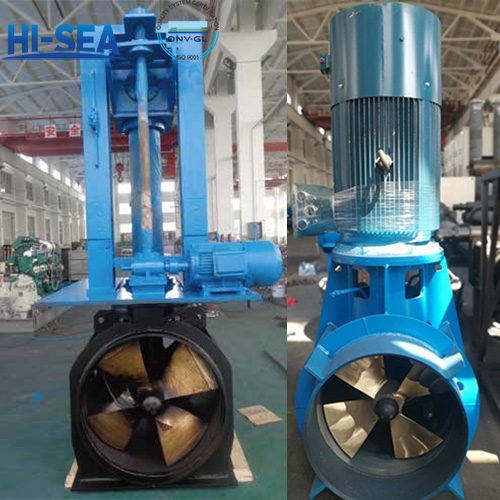
What are the driving methods of the tunnel thruster
Tunnel thrusters, which are commonly used as bow thrusters, can be driven by several different methods depending on the vessel's design, size, and power requirements. The main driving methods for tunnel thrusters include:
Electric motor: The most common driving method for tunnel thrusters is an electric motor, which is powered by the ship's electrical system. The electric motor drives the propeller, which creates the thrust needed to maneuver the ship.
Hydraulic motor: Some tunnel thrusters use a hydraulic motor to drive the propeller. Hydraulic motors are powered by hydraulic fluid, which is pressurized by a pump. The hydraulic motor then converts the hydraulic energy into mechanical energy to drive the propeller.
Diesel engine: In some cases, tunnel thrusters are powered by a separate diesel engine. The diesel engine drives the propeller directly, providing the thrust needed to maneuver the ship.
Overview
The driving method used for tunnel thrusters depends on the specific requirements of the vessel and the available power sources. The main driving methods for tunnel thrusters include:
1. Electric Motor Drive:
AC or DC Motors: The most common method uses an electric motor to drive the propeller. These motors can be either alternating current (AC) or direct current (DC) depending on the ship's electrical system.
Variable Frequency Drives (VFD): For AC motors, a variable frequency drive is often used to control the speed and direction of the motor, providing precise control over the thruster’s output.
2. Hydraulic Drive:
Hydraulic Motor: In some vessels, particularly those with existing hydraulic systems, a hydraulic motor is used to drive the thruster. Hydraulic systems offer the advantage of being compact and capable of providing high torque at low speeds, which is useful for controlling the thruster.
Power Packs: A hydraulic power pack, consisting of a pump, reservoir, and control valves, supplies the necessary hydraulic fluid pressure to operate the motor.
3. Diesel Engine Drive:
Direct Drive: On larger vessels or in situations where electrical power is limited, a diesel engine can be directly coupled to the thruster. This setup provides a reliable and independent power source.
Clutch Systems: In some designs, a clutch is used to engage or disengage the diesel engine from the thruster, allowing the engine to be used for other purposes when the thruster is not needed.
Considerations for Choosing a Drive Method:
Vessel Size and Power Requirements: Larger vessels might require more powerful thrusters, which could influence the choice of drive system.
Operational Profile: Vessels with specific maneuvering requirements might favor systems that offer finer control.
Redundancy and Reliability: Some vessels might require backup systems or more reliable drives, such as diesel or hydraulic, for critical operations.
Space and Weight Constraints: Electric systems are often more compact and easier to integrate into vessels with limited space.
Each drive method has its advantages and is chosen based on the specific needs of the vessel and its operational requirements.
For more marine bow/tunnel thruster information, please click here.





